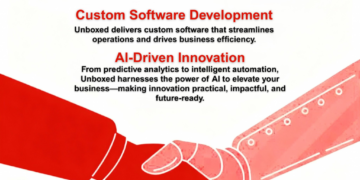The evolution of autonomous driving technologies is one of the most transformative innovations of the modern era. As vehicles become increasingly intelligent and self-reliant, the systems that power them—known as Advanced Driver Assistance Systems (ADAS)—play a crucial role in ensuring safety, accuracy, and situational awareness on the road. Behind these intelligent systems lies a less visible but critical process: ADAS data annotation.
Through meticulous labeling and tagging of vast datasets collected from cameras, LiDAR, radar, and other sensors, ADAS data annotation trains machine learning models to perceive and interpret the driving environment just as humans do. It’s the foundation that allows vehicles to detect obstacles, recognize traffic signs, and make split-second driving decisions that ensure passenger and pedestrian safety.
Understanding ADAS Data Annotation
ADAS data annotation is the process of labeling data used to train AI models in advanced vehicle systems. These datasets include diverse sources such as images, videos, and 3D point clouds collected from vehicle sensors. Annotators meticulously tag each element—like pedestrians, lane markings, vehicles, and road signs—so that AI models can learn to identify and respond to these real-world objects.
This process involves multiple techniques including semantic segmentation, 3D cuboid annotation, object detection, and lane boundary recognition. The accuracy and consistency of these annotations directly impact how effectively an autonomous system can function under complex driving scenarios such as heavy traffic, varying weather conditions, or nighttime driving.
The Role of ADAS Data Annotation in Autonomous Driving
Autonomous vehicles rely on continuous streams of high-quality annotated data to make sense of their surroundings. Without properly labeled datasets, AI algorithms cannot distinguish between a tree and a traffic light or recognize when a pedestrian is about to cross.
Through ADAS data annotation, developers ensure that vehicle systems can:
- Understand their environment – Annotated data helps vehicles interpret real-world surroundings with depth, movement, and context.
- Detect and track objects – Annotation enables object recognition and tracking, crucial for preventing collisions and maintaining safe distances.
- Enhance decision-making – AI models learn how to make informed driving decisions such as when to brake, accelerate, or change lanes.
- Improve real-time responsiveness – Annotated datasets help systems predict dynamic scenarios and respond instantly.
In essence, ADAS data annotation forms the cognitive framework that empowers vehicles to perceive and act intelligently—making autonomous driving safer and more reliable.
Data Complexity and the Need for Multimodal Accuracy
Modern ADAS systems depend on multimodal data—information captured from multiple sensors like LiDAR, radar, and high-resolution cameras. Each data type offers a unique layer of perception: LiDAR provides 3D spatial understanding, cameras deliver visual clarity, and radar offers motion detection under poor visibility.
Annotating this complex combination of data demands precision, scalability, and advanced quality control. Furthermore, diversity in driving conditions across regions—ranging from crowded urban roads to rural highways—necessitates varied and context-aware datasets.
Cultural and linguistic differences also affect how data is labeled and interpreted, especially in global applications. As explored in Managing Multilingual Data Annotation Training: Data Quality, Diversity, and Localization, localization ensures that annotation reflects region-specific driving behaviors, signage, and environmental variables, which is vital for global deployment of autonomous systems.
Applications of ADAS Data Annotation in Real-World Scenarios
- Lane and Road Boundary Detection
Annotating lane lines and road edges helps autonomous vehicles maintain their path and ensure lane discipline, even in poorly marked or complex road environments. - Traffic Sign and Signal Recognition
Through accurate labeling, vehicles can recognize and respond appropriately to traffic signs, signals, and speed limits. - Pedestrian and Vehicle Detection
Annotation helps systems distinguish between different moving objects, enabling safe navigation in busy urban areas. - Parking Assistance and Collision Avoidance
Annotated 3D environments allow vehicles to detect proximity and navigate tight spaces, enhancing self-parking and anti-collision mechanisms. - Weather and Lighting Adaptation
Annotating data under various weather and lighting conditions ensures system reliability during rain, fog, or nighttime operations.
Benefits of High-Quality ADAS Data Annotation
- Enhanced Safety: Better annotation leads to improved decision-making and safer navigation in unpredictable environments.
- Greater Accuracy: Precise labeling minimizes false detections and improves the reliability of object recognition.
- Faster Model Training: Well-structured data reduces training time, accelerating the development of autonomous systems.
- Scalability: Quality annotation allows models to adapt easily across different geographies and conditions.
- Cost Efficiency: Efficient annotation workflows lower long-term operational costs by reducing errors during AI model deployment.
Top 5 Companies Providing ADAS Data Annotation Services
- Digital Divide Data (DDD)
Digital Divide Data is a global leader in ethical AI and advanced data services. The company specializes in high-quality annotation for autonomous systems, including ADAS, LiDAR, and computer vision datasets. DDD’s human-in-the-loop model ensures accuracy, scalability, and fairness in AI development, supporting industries such as automotive, defense, and technology. - Scale AI
Scale AI provides annotation and data infrastructure for AI-driven industries, with robust tools for sensor fusion, LiDAR, and 3D perception data used in autonomous driving research. - Alegion
Alegion focuses on AI data labeling for complex use cases like ADAS and industrial automation. Their platform integrates human expertise with AI-assisted quality control. - Appen
Appen is known for its global crowd network and advanced data labeling capabilities. It supports ADAS training with multilingual and multimodal datasets for enhanced localization. - Cogito Tech
Cogito Tech delivers AI data annotation for image, video, and 3D sensor data used in autonomous vehicle systems. Their team ensures data precision tailored for real-time object detection and classification.
Challenges in ADAS Data Annotation
Despite its critical importance, ADAS data annotation faces challenges such as:
- Volume and Complexity: Massive datasets from multiple sensors require extensive processing and storage.
- Edge Case Scenarios: Rare events like sudden pedestrian movement or extreme weather must be captured and annotated for real-world reliability.
- Quality Control: Maintaining consistency across diverse annotation teams and datasets is essential for model accuracy.
- Ethical Data Practices: Protecting privacy and ensuring data fairness are vital in building trustworthy AI systems.
Overcoming these challenges demands not only advanced tools but also skilled annotators who understand the nuances of driving environments and sensor technologies.
Conclusion
The road to fully autonomous vehicles is paved with data—and at its core lies the discipline of ADAS data annotation. By transforming raw sensory inputs into structured, intelligent information, annotation bridges the gap between perception and decision-making in machine systems.
As industries push the boundaries of automation, the demand for accurate, scalable, and ethically sourced data annotation continues to grow. With innovations in AI and data management, the next generation of ADAS systems will be safer, smarter, and more adaptive—redefining the way humanity moves.
In the pursuit of autonomous excellence, one truth remains clear: precision in data annotation drives precision on the road.



















